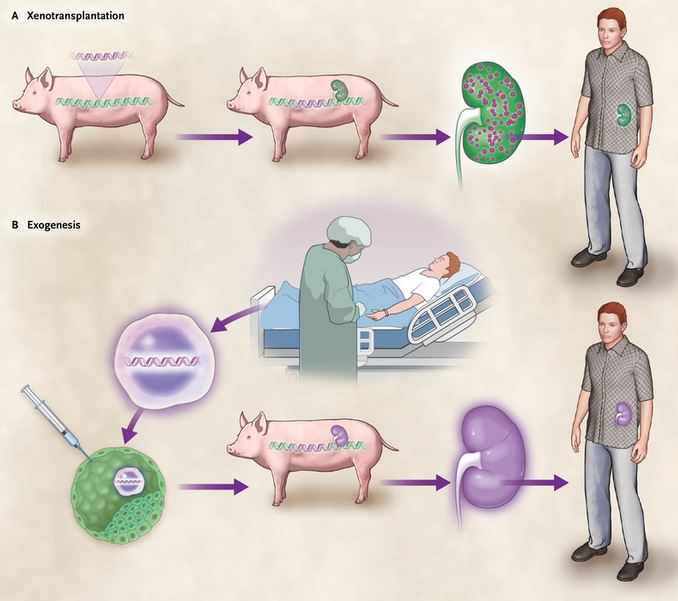Note4Students
From UPSC perspective, the following things are important :
Prelims level: Xenotransplantation, Crispr-Cas9
Mains level: NA

Why in the News?
The recent passing away of Richard Slayman, the first recipient of a modified pig kidney transplant, has drawn attention to xenotransplantation—an innovative medical procedure with the potential to revolutionise organ transplantation.
What is Xenotransplantation?
- It involves transplanting live cells, tissues, or organs from nonhuman animal sources into human recipients.
- It seeks to address the critical gap between organ demand and supply.
- Xenotransplantation, pioneered in the 1980s with heart transplants, has emerged as a promising solution to alleviate the organ shortage crisis, particularly prevalent in kidney transplantation.
Examples:
- Chimpanzee-to-Human Transplants: In the 1960s, there were attempts at chimpanzee-to-human kidney transplants, heart transplants, and liver transplants.
- Pig-to-Human Heart Transplant: In 2022, a groundbreaking milestone was achieved with the first successful transplantation of a pig heart into a human with end-stage heart disease
Procedural Details
- Xenotransplantation involves genetic modifications to animal organs, like 69 CRISPR-Cas9 edits to a pig kidney, removing pig genes and adding human genes for compatibility.
Why is the Pig a Preferred Source?
- Anatomical Resemblance: Pigs are favoured for xenotransplantation due to their physiological similarities to humans, facilitating successful integration. Pig organs, like heart valves, have been used in human medicine for over 50 years.
- Breeding Advantages: Extensive pig farming ensures a readily available and cost-effective supply of organs, with diverse breeds offering size-matching opportunities.
Challenges associated
- The main challenge is preventing organ rejection. Innovative methods, such as embedding the pig’s thymus gland under the kidney’s outer layer, help manage immune responses.
- There are also significant concerns regarding potential infections from both recognised and unrecognised infectious agents that could affect not only the recipient but also the wider population.
- Retroviruses present in the animal organs pose a risk of cross-species infection, which could remain latent and cause diseases years after the transplantation.
PYQ:[2017] With reference to agriculture in India, how can the technique of ‘genome sequencing’, often seen in the news, be used in the immediate future?
Select the correct answer using the code given below: (a) 1 only |
Get an IAS/IPS ranker as your 1: 1 personal mentor for UPSC 2024
